Growing up in the ’70s meant a life filled with chores that many recall with a mixture of nostalgia and relief that they are no longer required. These tasks, often tedious and time-consuming, were a part of everyday life for kids of that era.
Unlike today’s modern conveniences, these chores demanded physical labor and patience, shaping the childhood experiences of many. From maintaining the lawn to assisting with laundry without the ease of modern-day appliances, these tasks were universally dreaded by children of the ’70s. Join us in reminiscing about these twelve quintessential chores that defined a generation’s upbringing.
1. Mowing the Lawn
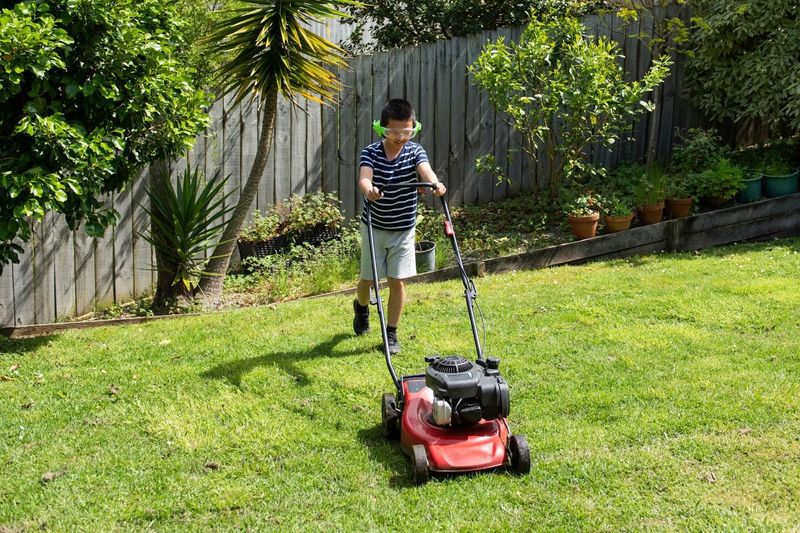
Mowing the lawn in the ’70s was a sweaty and labor-intensive task. Without the convenience of modern electric or gas-powered mowers, many kids used push mowers. The heavy metal contraptions required considerable effort to push, especially on a hot summer day. The uneven ground often made the task even more challenging. Parents expected perfectly manicured lawns, which added pressure to do a thorough job. This chore was often a weekly summer event, dreaded for its demand on both time and energy. Completing it meant a well-deserved cold drink and a sense of accomplishment.
2. Doing the Laundry

Doing the laundry in the ’70s often meant a trip to the basement or laundry room. Unlike today’s high-efficiency machines, older models required more manual work. Clothes were separated by color and fabric, and kids learned to handle detergents carefully. The task didn’t end with washing; drying involved either a clothesline or a wringer dryer. Folding was meticulous work, often done in a quiet, dimly lit room. This chore taught responsibility but was a tedious task many wished to avoid. The reward was a stack of clean clothes ready for the week.
3. Dishwashing by Hand
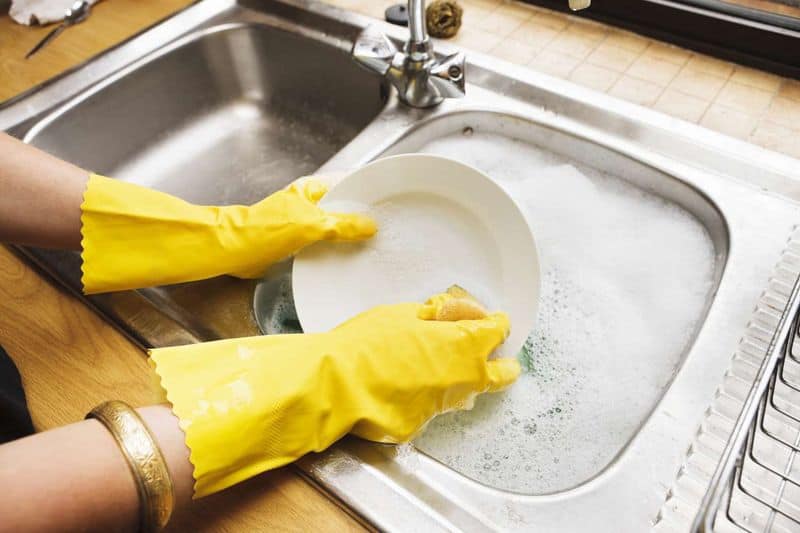
Before dishwashers became common, washing dishes by hand was a nightly chore. This task involved scraping leftovers, rinsing, and scrubbing each dish until spotless. Hot water and soap were essential, and drying required clean towels and careful stacking. Families often assigned this task to kids, who completed it after dinner. The chore could feel endless, especially after large family meals. Despite the complaints, it was a time for reflection or even listening to music on a nearby radio. Finishing it meant a tidy kitchen and the satisfaction of a job well done.
4. Taking Out the Trash

Taking out the trash was a straightforward but bothersome chore. Metal trash cans were heavy, especially when filled with the week’s waste. Kids often had to navigate through backyards and around obstacles to reach the curb. This task was usually done after dark, adding an eerie element for younger kids. The clang of the metal lid was a familiar sound echoing in the night. Completing this task was a regular duty but often met with procrastination. Nonetheless, it was essential for maintaining household cleanliness and preparing for the weekly garbage collection.
5. Vacuuming the House

Vacuuming in the ’70s was no easy feat. Large, bulky vacuums required strength to maneuver, especially over thick shag carpeting. Cords constantly tangled, and attachments were fiddly. Kids tasked with vacuuming had to ensure every crumb was collected, under furniture and in corners. This chore was often a Saturday morning routine, accompanied by instructions from parents on achieving a spotless home. Despite the labor, it offered a chance to zone out and maybe even enjoy music. The satisfaction of a clean floor was rewarding, though temporary until the next inevitable mess.
6. Raking Leaves

Raking leaves was a seasonal chore that could be both fun and laborious. In the ’70s, kids spent autumn afternoons gathering heaps of leaves. The task required a steady rhythm and often involved playful jumping into piles before bagging them. Parents demanded neat lawns, so every leaf needed to be collected. This chore was a family activity, sometimes turning competitive over who could rake the fastest or create the biggest pile. Although it was tiring, the crisp fall air and the satisfaction of a tidy yard made it somewhat enjoyable.
7. Washing the Car

Washing the car was another task that required effort and attention to detail. Kids in the ’70s learned to scrub every inch of the family vehicle, from bumper to bumper. This involved buckets of soapy water, sponges, and sometimes a hose for rinsing. The hot sun often made this chore sweaty work. Parents supervised, ensuring no spots or streaks were left behind. While it was a chore, it offered a chance to cool off with water fights and hose sprays. The result was a shiny car ready for weekend trips, making the effort worthwhile.
8. Cleaning Windows

Cleaning windows was a task that required precision and patience. Kids were often given this chore to ensure a spotless finish, free of streaks. It involved climbing ladders and reaching awkward angles. Cleaners were often homemade mixtures, adding a unique challenge. Parents supervised, demanding clarity in every pane. This chore taught attention to detail, with sunlight revealing any missed spots. Despite the hard work, the reward was a clear, bright view of the outdoors. It was a chore often met with both dread and pride once completed.
9. Weeding the Garden
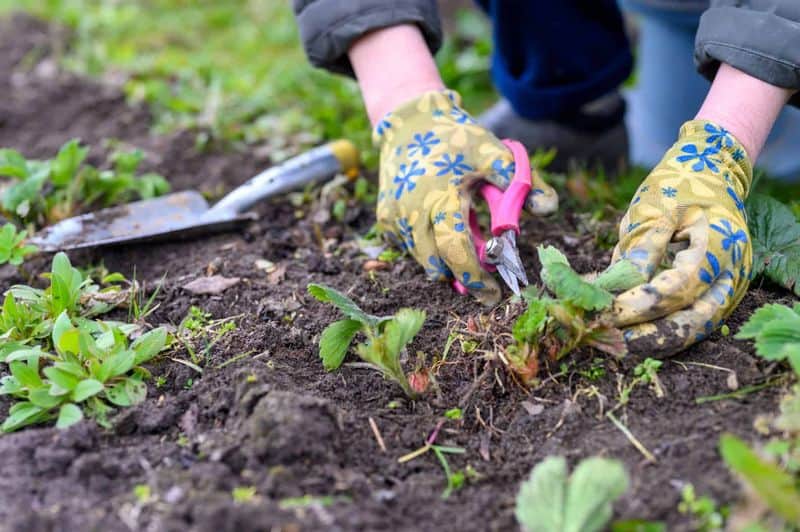
Weeding the garden was a task that taught patience and perseverance. Kids were expected to identify and remove unwanted plants by hand, ensuring the garden thrived. This often meant hours in the sun, bending and pulling stubborn weeds. The task was critical for maintaining healthy plants and a neat appearance. Although tedious, it offered a chance to connect with nature and learn about different plant species. The satisfaction of a weed-free garden, ready for new growth, made the effort rewarding, despite being a chore often avoided.
10. Ironing Clothes
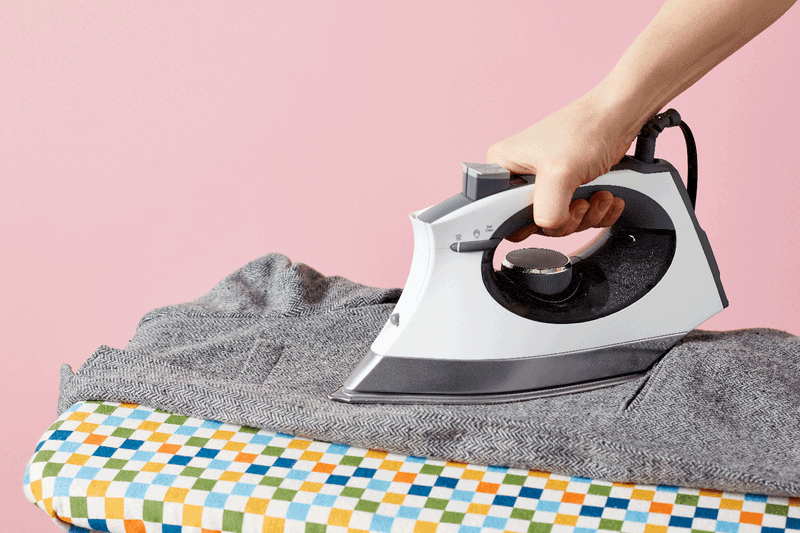
Ironing clothes in the ’70s required skill and care. Kids learned to handle heavy irons and navigate around buttons and seams. This chore was crucial for school uniforms and Sunday bests. It involved setting up an ironing board and ensuring no wrinkles were left. The task demanded focus, with the risk of burns always present. Although it could be monotonous, it taught precision and patience. Completing a stack of neatly pressed clothes was satisfying, making the effort worthwhile. Despite its necessity, ironing was a chore many tried to dodge.
11. Cleaning the Bathroom

Cleaning the bathroom was a chore involving scrubbing, wiping, and disinfecting. Kids learned to tackle soap scum, water spots, and grime. The task required various cleaners, and each surface needed specific attention. Despite the unpleasantness, it was essential for hygiene. Parents often inspected the work, ensuring everything sparkled. This chore taught responsibility and the importance of a clean environment. Although daunting, the reward was a fresh and sanitary bathroom. It was a task that, once completed, offered a sense of achievement and relief. Despite its necessity, it was often met with reluctance.
12. Dusting Furniture
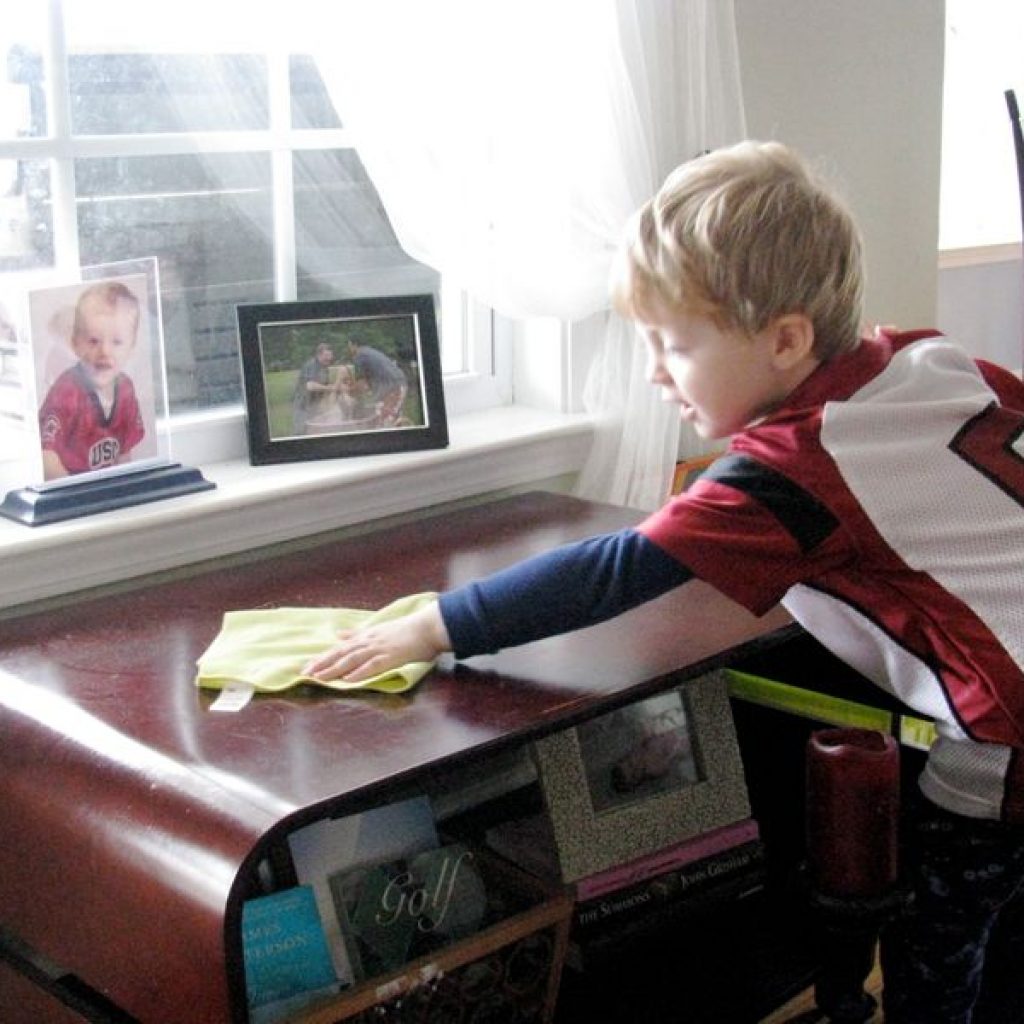
Dusting furniture was a seemingly endless task. Kids learned to navigate around delicate items, using dusters and cloths to restore shine. This chore was often underestimated but required careful attention to detail. Parents expected every surface to be spotless, free of dust and fingerprints. It became a weekly routine, often incorporated into larger cleaning sessions. Despite its simplicity, dusting taught thoroughness and respect for household belongings. Completing this task left surfaces gleaming, and homes feeling refreshed. Although it wasn’t the most exciting chore, its role in keeping a tidy home was undeniable.

Well, hello there!
My name is Jennifer. Besides being an orthodontist, I am a mother to 3 playful boys. In this motherhood journey, I can say I will never know everything. That’s why I always strive to read a lot, and that’s why I started writing about all the smithereens I came across so that you can have everything in one place! Enjoy and stay positive; you’ve got this!

